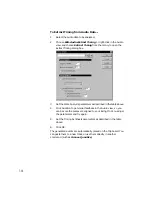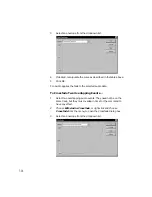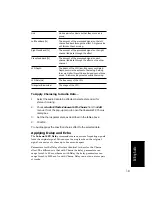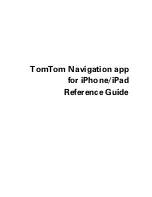
7-26
The digital noise gate parameters are described in the following table.
Parameter...
Meaning...
Open Level (dB)
The loudness threshold for opening the noise gate.
The gate officially opens when loudness rises
above this level, although it can open earlier
because of the Attack Time.
Close Level (dB)
The loudness threshold for closing the noise gate.
The gate officially closes when loudness falls below
this level, although it can stay open later because
of the Release Time.
Attack Time (ms)
The amount of time before the Open Level is
reached that the gate actually opens. Opening the
gate before the Open Level is reached lets you
include the attack part of the sound. This can be
very useful for vocals; without an attack time, the
beginnings of words might be clipped.
Hold Time (ms)
The minimum time for the gate to stay open. Hold
Time is useful when you’ve set high open and close
levels, for example, when your source signal is very
loud. Noise gates set this way tend to react to
repeated percussive passages (such as drum rolls)
by repeatedly opening and closing; this can sound
unpleasant. By setting a hold time, you can ensure
that the gate stays open long enough during
percussive passages.
Release Time (ms)
The amount of time after the Close Level is reached
that the gate actually closes. This lets the tail end
of sounds pass through without being clipped.
Granularity (ms)
The time increment over which the audio signal is
tested for opening or closing the gate. Higher
values mean that audio signals must stay loud
longer before the gate opens. If the Granularity time
is short, then even quick, loud bursts of sound can
open the gate.
Содержание PRO AUDIO
Страница 1: ...Cakewalk ProAudio User s Guide...
Страница 16: ...xvi...
Страница 38: ...1 20...
Страница 182: ...5 34...
Страница 240: ...6 58...
Страница 334: ...8 48...
Страница 484: ...15 16...
Страница 492: ...16 8...
Страница 500: ...A 8...
Страница 518: ...B 18...
Страница 540: ...D 6...
Страница 548: ...E 8...
















































